How To Protect (And Destroy) Homes With Mr. Safety
Meet the man whose team tests everything from pizza ovens to fire doors.
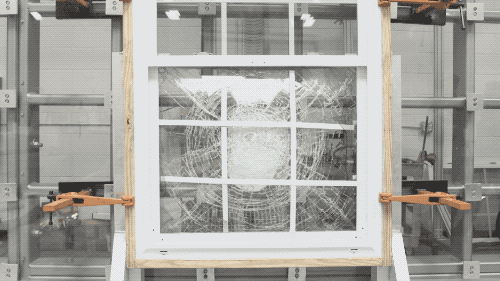
In one of the labs at Underwriters Laboratories (UL), a ferocious hurricane might be brewing. The simulated natural disaster whips a window with water and high air pressure. In another lab, you’ll find potatoes cooked for hours in microwaves, spinning like burning merry-go-rounds. And during some months, a full model home—sometimes with multiple stories—will be constructed just to be set ablaze.
“Today they happen to be testing a pizza oven there, and guess what they’re cooking?” says John Drengenberg, former consumer safety director for UL. Just 15 minutes prior to talking on the phone, Drengenberg had walked by a lab testing commercial cooking appliances and saw technicians baking pepperoni pizza, which is the specified safety standard.
“They’re cooking pizzas like crazy and they’re taking them into a little satellite cafeteria so that the staff can eat the pizza if they want to,” he says. “It doesn’t happen every day. It’s just one of those unique things.”
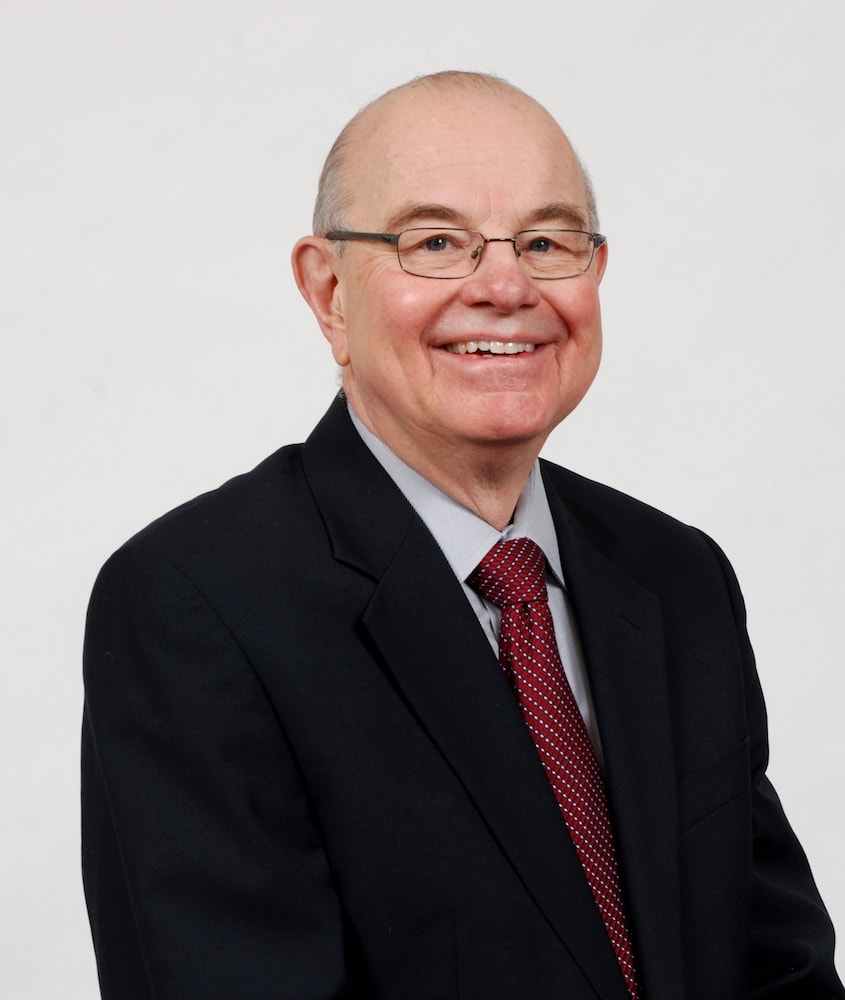
Founded in 1894, UL conducts safety tests and certification on a wide array of different types of products—everything from microwaves, televisions, and household furniture to bulletproof glass and lifejackets. The labs have even tested drones and were involved in establishing a safety standard for hoverboards. Engineers design specialized tests to evaluate fire, electrical, and even mechanical hazards, like pinch points and sharp edges on certain products. If the product passes the tests and meets the company’s standards, it’s awarded with the circular UL mark—a stamp of safety approval. Over the course of a typical year, they’ll test and potentially approve more than 22 billion products at their Illinois headquarters and locations around the world.
“Safety is important,” says Drengenberg. “You talk to any buyer from a major retailer that’s buying televisions or light fixtures, they will know exactly what UL is and what it’s all about, and they will demand [the UL mark] before they ever put the product in their catalog or online or in their stores.”
[In NYC waters, a whale of a tale.]
Over his more than half a century at UL, Drengenberg, age 76, witnessed a plethora of products get bombarded, rolled, drenched, torched, and destroyed all in the name of safety.
“I’m always aware of safety,” he says. “It’s just so engrained in my mind.”
He has helped design safety test programs, establish safety standards, and communicate safe uses of appliances in the home. In the 1980s, he was even a frequent guest on a home improvement radio program.
“I did a lot of interviews [on this program] and the host started calling me Mr. Safety,” Drengenberg says. It’s been over 2,400 media interviews later (including a holiday safety stint with the Muppets), and the name has stuck.
“I’m always aware of safety. It’s just so engrained in my mind.”
Drengenberg always had an interest in radio. As a child, he learned how to operate ham radios, which later led him to study electrical engineering in college. Although he specialized in circuit design, Drengenberg debated which sector of industry to enter after graduating. In February 1966, he took a job at UL, thinking that spending a year or two testing a variety of different products would help him narrow down his interests.
“Well, that little plan didn’t work so well,” he says. “The whole concept of keeping people safe and secure really appealed to me, and years went by and I realized I was never going to leave and design circuits.”
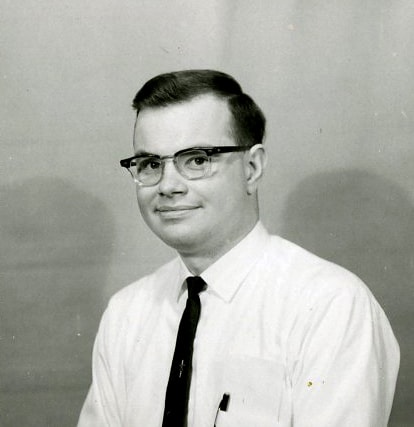
Drengenberg started off as an UL engineer, a job that required drafting up some creative tests to assess the safety of products sent to the labs. For example, engineers fashioned probes that are shaped like fingers (complete with knuckles and flexibility) to evaluate enclosures on different electrical products. And to test building features like windows and doors, engineers use UL’s Building Envelope Performance Lab, an indoor facility that can simulate hurricanes, earthquakes, tornadoes, and other extreme weather and temperatures. In another, technicians burn mattresses, roofing shingles, and fire doors to simulate one of the most common home safety issues.
[What might actually happen during a nuclear war?]
“All the doors in any hotel or motel you ever stayed at or the doors in any school you’ve been in, those are fire doors,” says Drengenberg. “They all meet the UL requirement for one hour or two hour fire ratings.”
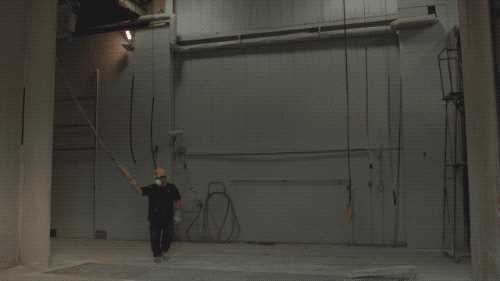
Occasionally, they even set an entire home on fire.
Inside a warehouse space, the team can build model homes to simulate a variety of home layouts. Technicians will lace the home with strategically placed carbon monoxide and carbon dioxide sensors, smoke sensors, and infrared cameras wired to observe and track the progress of a fire. Then, each day, they will start a fire in a different room, and see how far it spreads. (Don’t worry: UL has their own firefighters to put out the flames and the smoke stays inside the warehouse to comply with EPA regulations.)
“You could be outside the building and not even know there’s a roaring fire going on in that building,” says Drengenberg.
[Hidden in the drawers of a museum, evidence of cleaner air.]
By destroying these fake homes, the researchers are able to determine what types of materials are more flammable and the rate at which a fire spreads—and how the rate has changed over time. For example, a room filled with older items made primarily out of natural materials burns in 13 to 17 minutes, whereas one with items made of synthetic materials can combust in just a minute and thirty seconds. In most modern, open floorplan homes the time you have to escape from a fire “is down to three or four minutes,” says Drengenberg.
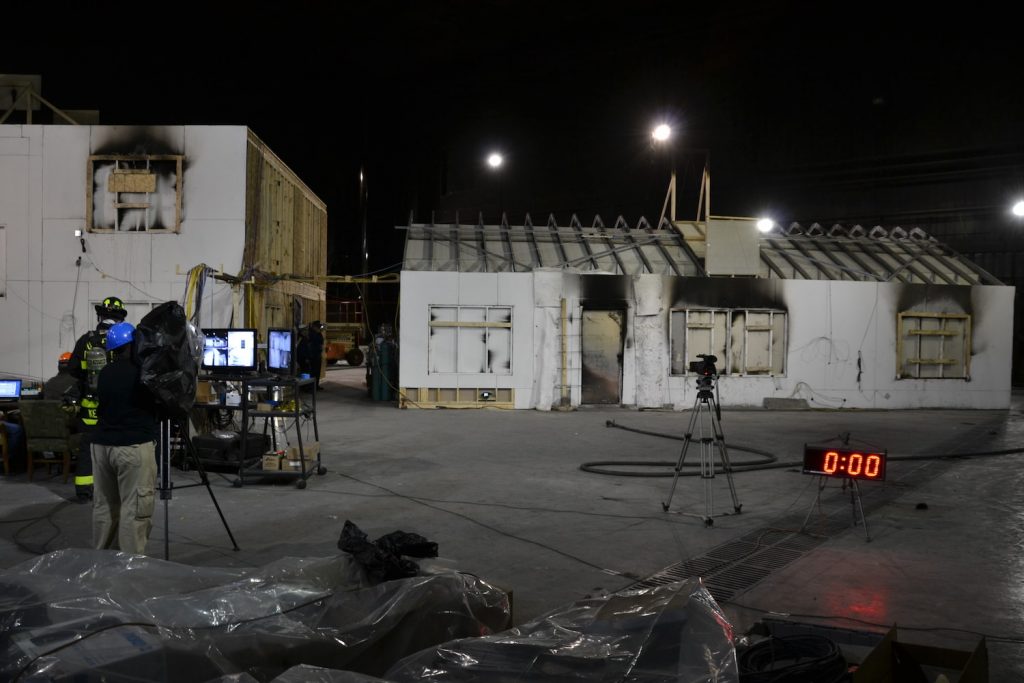
However, it’s not all burning furniture. The leading cause of household fires and injuries is cooking equipment, including the conventional microwave oven. Generally, microwave ovens are safe—if you use them for their intended purposes, explains Drengenberg. During 2007 to 2011, fire departments in the United States responded to an average of 7,100 home structure microwave-related fires per year, according to the National Fire Protection Association. To combat this, UL came up with a special test.
“It’s the cavity fire containment test,” Drengenberg says, who had managed the research group that first developed the test. “But really we call it the potato test.”
Underwriters Laboratories researchers learned that potatoes—when heated long enough—can burn, and are one of the leading causes of fires in microwave ovens. At the lab, the technicians will wrap a microwave oven with cheese cloth and then place potatoes on the turntable. They will then heat them (sometimes over an hour) until they dry out, turn black, and ultimately burst into flame. If the flames breach outside of the cavity and catch the cheesecloth on fire, the microwave oven fails the containment test.
“Our intention is that yes, you can make a mistake, and you can have a fire in your microwave,” he says, “but we want to make sure that it doesn’t burn your house down and endanger yourself or your family.”
Another common household hazard is the automatic garage door, which is often the largest moving object in a residence, says Drengenberg.
“If a toddler gets under that, it’s just a tragedy,” he says. “Sadly, a number of years back a few children a year would get trapped by a downward traveling garage door, and if the door comes across their chest of their neck, they suffocate, they can’t breathe.”
During the 1970s to the 1990s, at least 85 children in the U.S. died or suffered permanent brain injury from accidents involving automatic garage doors, according to a 1996 report in the New York Times. Pressure sensors that trigger a garage door to retreat back up if it hits an object were reportedly failing. Drengenberg had been overseeing a team that was studying safety mechanisms in garage door sensors and writing requirements for manufacturers.
“We got a lot of good ideas, and one of them was some kind of electric eye on the bottom of the garage door,” he says.
This “electric eye” became the sensor that can be seen on the track frame of electric garage doors today, hovering about six inches from the ground. The photo-electric sensor detects objects underneath and whisks the door back up. The team’s safety standard and the electric eye remains a prominent fail-safe measure on garage doors today. To Drengenberg’s knowledge, there have not been any reports of a child dying from a downwards traveling garage door equipped with an electric eye sensor.
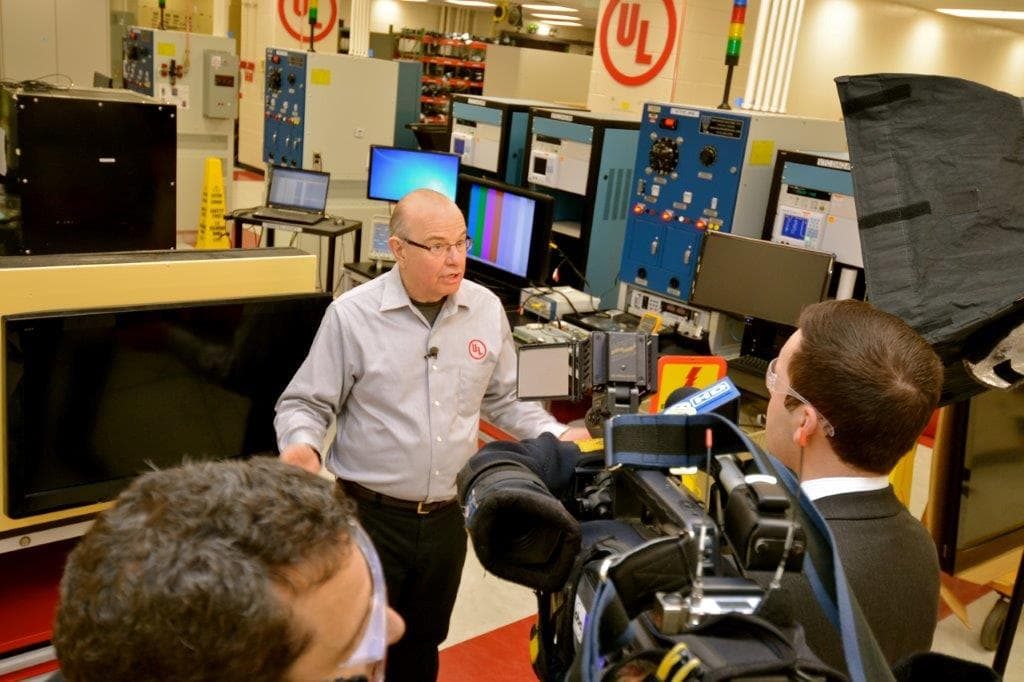
In June, Drengenberg retired from his role at UL. He now advises the company as a corporate fellow, and continues to teach others about hazards in the home as Mr. Safety (he’s already booked presentations and lectures through March 2018). But his work at UL still affects his life outside of the lab.
“I have a little more keen fear of fire than most people do,” he says. “I could connect you to my wife and she will tell you when we have people over for dinner, she would love to have a tapered candle on the dining room table, but I get a little nervous and I put a fire extinguisher under my chair.”
He reports that, for most special occasions, she’s given up on lighting candles.
Lauren J. Young was Science Friday’s digital producer. When she’s not shelving books as a library assistant, she’s adding to her impressive Pez dispenser collection.